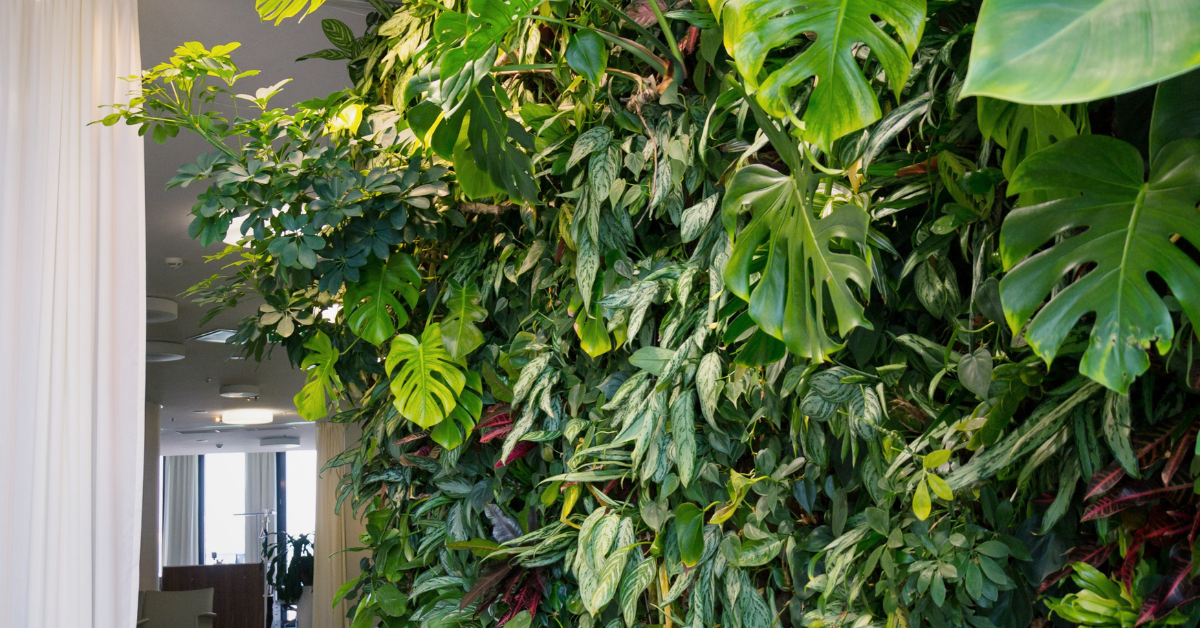Living walls for modern interiors — Benefits, types, and installation tips for green walls

A ‘Living Wall,’ also known as a ‘Green Wall’ or a ‘Vertical Garden,’ is a wall partially or completely covered with greenery. Unlike green facades, which have plants growing from the ground, living walls include a growing medium such as soil directly on the face of the wall. Many living walls also have integrated water delivery systems, ensuring that the plants receive adequate hydration.
History and Popularity of Living Walls
Stanley Hart White, a professor of Landscape Architecture at the University of Illinois, invented living walls. In 1938, he patented his Vegetation-Bearing Architectonic Structure and System. Today, living walls remain popular as a sustainable way to incorporate nature into urban areas. They can be found worldwide, with notable examples such as the largest living wall in London at the Rubens at the Palace Hotel in Victoria.
Living walls can be installed in both commercial and residential settings, attached to the interior or exterior of buildings or as free-standing structures. Popular plants for living walls include Heuchera, Thyme, Sedum, Carex, and Ajuga.
Types of Living Walls
Broadly speaking, there are three types of living walls:
Direct Greening
This conventional method involves planting self-attaching wall shrubs and climbers. It is the most inexpensive option but requires time for the plants to establish themselves.
Indirect Greening
This approach uses a trellis or wire for the climbers to attach to, creating an air gap between the building and the plant. This method provides additional ventilation and protection for the building.
Living Wall Systems
These systems use planter boxes or felt with soil for the plants to grow into and require their own irrigation system. Living wall systems offer immediate aesthetic impact and are often used in high-end corporate interiors and luxury interior design projects.
Benefits of Living Walls
Living walls offer numerous benefits, making them a valuable addition to any building:
Aesthetic Enhancement
Living walls significantly improve the aesthetics of buildings, creating a more attractive environment for both work and living spaces. They can enhance the well-being of employees and residents by providing a connection to nature.
Temperature Regulation
Vegetation acts as an insulating jacket, keeping buildings warmer in winter and cooler in summer. This can lead to significant savings on heating and air conditioning bills.
Improved Air Quality and Noise Reduction
Living walls contribute to better urban air quality and help reduce noise pollution, creating a more pleasant and healthier environment.
Increased Biodiversity
Living walls provide habitats for insects and other small wildlife, increasing biodiversity in urban areas.
Alleviation of Sick Building Syndrome
When installed indoors, living walls can help alleviate problems related to Sick Building Syndrome and improve the morale of staff by enhancing the indoor environment.
Professional Help for Your Living Wall Project
Would you like professional help to create a living wall for your home or workplace? As one of the “20 Best Interior Designers in Britain” recognized by The Daily Telegraph, I design for clients in London, San Francisco, and New York. My team and I offer a complete service to bring your vision to life. Contact me at liza@lizaevans.com to start the conversation. I look forward to hearing from you.
